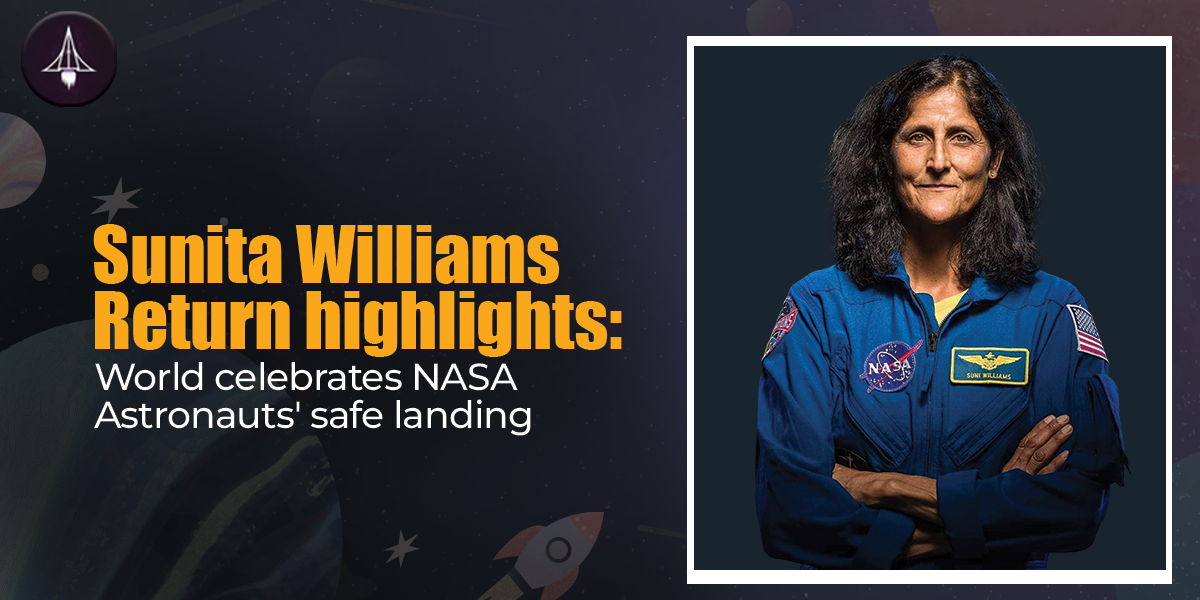March 18, 2025—what a day for space exploration! After nine awe-inspiring months orbiting Earth aboard the International Space Station, NASA astronauts Sunita Williams and Butch Wilmore touched down safely, marking a triumphant milestone in human spaceflight. Their journey back? Nothing short of extraordinary, and it’s a tale of precision, teamwork, and cutting-edge technology that we simply have to dive into.Stay Tuned!
The Journey Back to Earth: How They Were Brought Back

- The astronauts began their descent in SpaceX’s Dragon Freedom capsule, a marvel of modern engineering that's become a workhorse for NASA’s Commercial Crew Program.
- Undocking from the ISS, they embarked on a 17-hour voyage home—a carefully choreographed ballet of orbital maneuvers and deorbit burns.
- Then came the dramatic plunge through Earth’s atmosphere. Parachutes deployed, slowing their descent to a gentle splashdown in the Gulf of Mexico, about 200 miles southwest of Tallahassee, Florida.
- It all sounds cinematic, and honestly, it was. What happens next is equally impressive: SpaceX’s recovery teams were on the scene instantly, whisking them away for vital post-mission care in Star City, Russia.
- Because nine months in microgravity demands more than a welcome home party—it requires meticulous medical attention to ensure astronauts bounce back strong.
Key Achievements of Sunita Williams
Sunita Williams isn’t just returning—she’s rewriting history. Holding the record for the longest spaceflight by a woman at 195 days aboard the ISS, her career is a masterclass in perseverance and scientific curiosity. She’s contributed groundbreaking research across fields like fluid mechanics and materials science, unlocking secrets about how the human body copes with the unique challenges of microgravity. These insights are crucial for humanity’s next giant leaps—Mars, anyone? Beyond the data, Williams embodies inspiration itself. For countless women worldwide, she’s a shining beacon proving that space isn’t a boys’ club—it’s a place where women lead, innovate, and soar.
The Post-Mission Process: Medical Evaluations and Rehabilitation
But let’s not underestimate the toll such missions take. Coming back from space isn’t as simple as landing and walking away. The human body is a delicate machine finely tuned to Earth’s gravity. Williams and Wilmore face a rigorous reentry into life down here—muscle atrophy and bone density loss are real hurdles after months floating in zero-G. Medical teams conduct exhaustive health checks, then guide them through intense rehabilitation, helping rebuild strength, coordination, and even mental resilience. It’s a long road back, but every step is vital for their well-being and the success of future missions.
What’s Next for Sunita Williams?
So, what’s on the horizon for Sunita Williams?This space pioneer’s story is far from over. With her treasure trove of experience, she’s poised to mentor the next wave of astronauts—especially young women dreaming of the stars. Her deep knowledge of space biology will shape future missions to the Moon and Mars, helping develop life-sustaining technologies in the harshest environments imaginable. And she’ll keep captivating the public, lighting fires of curiosity and passion for STEM everywhere she goes. Imagine the ripple effect her voice and vision will have—countless young minds sparked to dream bigger.
Public and Global Reactions:
- Across the globe, Williams and Wilmore’s safe return ignited waves of celebration.
- Social media buzzed with awe and admiration; space enthusiasts, scientists, and fans shared heartfelt congratulations.
- Governments and institutions recognized this achievement as a symbol of international unity and the power of public-private partnerships—proof that collaboration fuels progress.
- Isn’t it remarkable how these missions knit humanity closer together, inspiring us all to reach beyond?

Impact on Space Exploration and Women in STEM
- Sunita Williams’ journey epitomizes more than individual achievement—it signals a paradigm shift in space exploration and STEM.
- Her trailblazing path challenges stereotypes, opening doors for women everywhere to explore, invent, and lead in fields once dominated by men.
- The future of space is diverse, inclusive, and brilliant, and she’s lighting the way.
So, what can we take away from this incredible chapter? That space isn’t some distant frontier only for a select few—it’s a boundless arena inviting passion, resilience, and innovation from everyone. And with champions like Sunita Williams, the sky is not the limit—it’s just the beginning.
About Us:
At SciAstra, we guide students who want to become scientists and pursue research by helping them secure admissions in the top colleges for the same like IISER, NISER, CEBS, ICAR, CMI, etc.Our mentors are from the top research institutes like IISER, NISER, IACS, CMI, ISI, IISC Bangalore, and so on. If you are looking to prepare for IAT / NEST 2025, you can check out our courses and get access to live classes, recorded lectures, study material, mock tests, doubt-clearing classes, and much more!To know more about us,
click here OR download the
SciAstra App from Play Store or
App Store!



Leave a comment